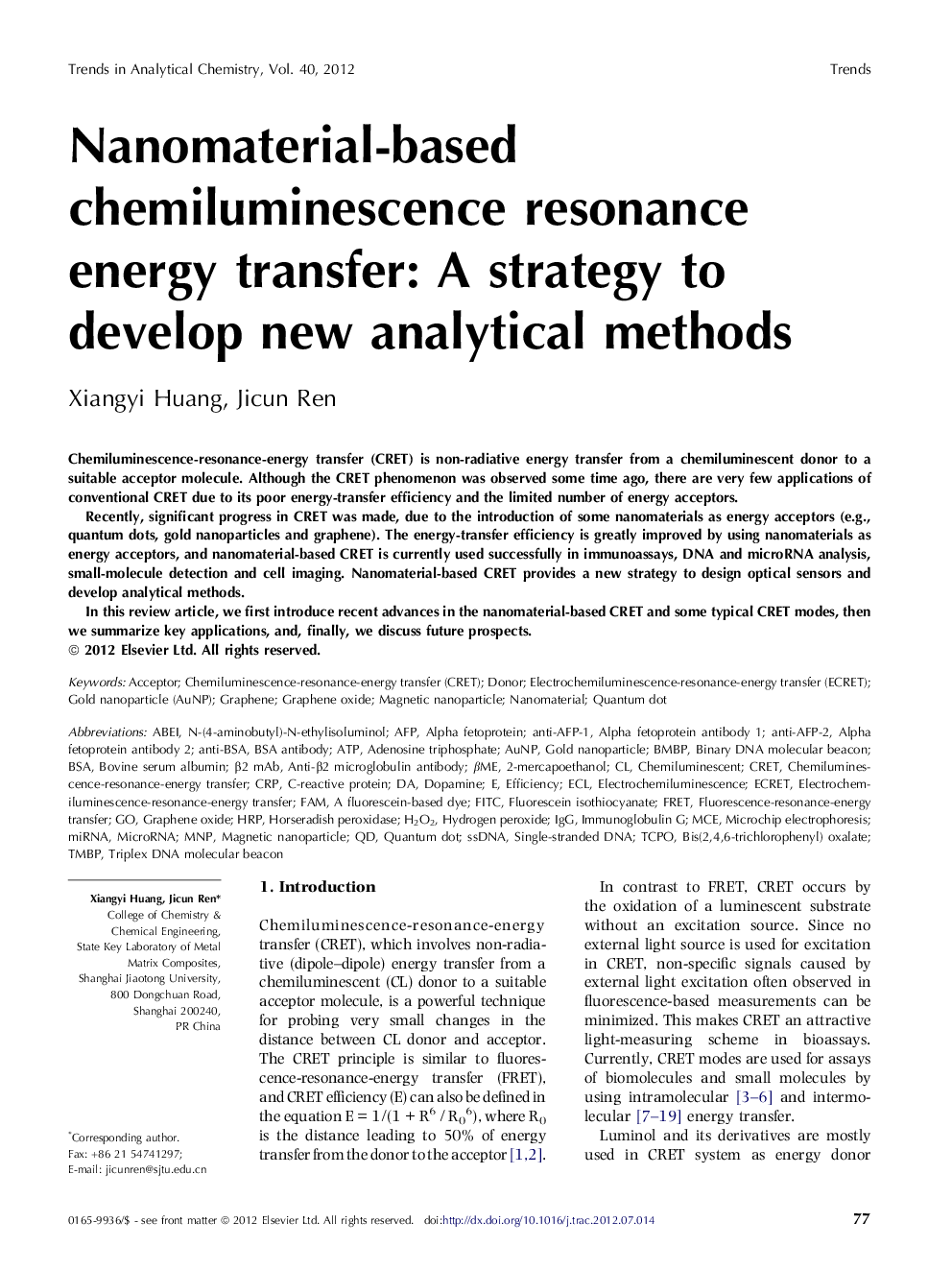| Article ID | Journal | Published Year | Pages | File Type |
|---|---|---|---|---|
| 1249194 | TrAC Trends in Analytical Chemistry | 2012 | 13 Pages |
Chemiluminescence-resonance-energy transfer (CRET) is non-radiative energy transfer from a chemiluminescent donor to a suitable acceptor molecule. Although the CRET phenomenon was observed some time ago, there are very few applications of conventional CRET due to its poor energy-transfer efficiency and the limited number of energy acceptors.Recently, significant progress in CRET was made, due to the introduction of some nanomaterials as energy acceptors (e.g., quantum dots, gold nanoparticles and graphene). The energy-transfer efficiency is greatly improved by using nanomaterials as energy acceptors, and nanomaterial-based CRET is currently used successfully in immunoassays, DNA and microRNA analysis, small-molecule detection and cell imaging. Nanomaterial-based CRET provides a new strategy to design optical sensors and develop analytical methods.In this review article, we first introduce recent advances in the nanomaterial-based CRET and some typical CRET modes, then we summarize key applications, and, finally, we discuss future prospects.
► Nanomaterial-based modes of chemiluminescence-resonance-energy transfer (CRET). ► Applications of nanomaterial-based chemiluminescence-resonance-energy transfer (CRET). ► Nanomaterial-based CRET improves energy-transfer efficiency. ► Nanomaterial-based CRET provides a new strategy to develop analytical methods.
